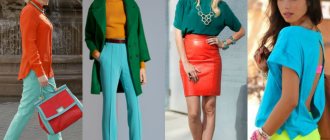We are rediscovering another type of natural treatment and introducing it into medical practice - this is color therapy or chromotherapy.
In Ancient Egypt, treatment with the energy of Ra, the sun god, was widely used. In large vessels filled with the juice of fruits, the juice of Ra, which accumulated in these fruits, they put precious stones of the same color as the juice in order to saturate it with the same color of the stone, and gave it to drink to maintain vitality and to treat various diseases. Color effects are not limited only to the organ of vision - the eye; it also affects other senses - taste, hearing, touch and smell.
A color can bring back pleasant memories of the happiest moments of your life, and vice versa, just like the sounds of music, a certain color can remind you of something sad, painful, suffering, or lost love. These sensations associated with color are called color associations.
The formation and consolidation of color associations in our consciousness is identical to the process of formation and consolidation of conditioned reflexes in the cerebral cortex. The way we perceive colors depends both on the colors themselves, their purity, brightness, saturation, and on the characteristics of our perception.
Each person reacts to certain colors differently. Each color affects different people differently, depending on their temperament and health status.
There are colors that we instinctively avoid - they irritate us, cause a feeling of discomfort and anxiety. Other colors please our eyes. We prefer them in clothes, jewelry, and interior design. Psychologists and psychiatrists, based on people’s preference or love for a certain color, determine a person’s character, his inclinations, his mentality, psyche, and even his state of health. This “color preference,” according to psychologists, is formed on the basis of established associations and depends on national traditions and connections, temperament, and gender.
There is an opinion that color preferences are biologically innate characteristics and, presumably, have a close connection with planetary influences in the process of individual formation. Children instinctively love bright and pure colors - red, blue, yellow. Any other color that is not part of the usual color scheme immediately arouses increased, intense interest in the child.
With age, “color preference” changes—within pure special colors, preference is given to cold tones. Very interesting data related to personality characteristics depending on “color preference” are available in a number of works by both our and foreign scientists.
Based on these works, one can draw up a very interesting picture, which will give readers the opportunity to see in some color characteristics the features of the signs of the Zodiac circle already familiar to us and thereby once again confirm the truth about the complete unity and interconnectedness of everything that exists in the world.
Yellow
- It's stimulating.
- Certain shades improve your mood and increase self-esteem.
- This is the color of self-confidence and optimism.
- Excessive or inappropriate pressing can increase fear and cause anxiety.
- It may also indicate problems with the digestive tract due to the nervous system.
- Means: optimism, self-confidence, emotional strength, kindness, creativity, irrationality, fear, emotional restlessness, depression, anxiety, suicidal tendencies, the need for contact with other people and the desire to get rid of mental problems, symbolizes the fear of loneliness.
Orange
- Change color.
- It combines physicality and emotion.
- It directs our thoughts to physical comforts: food, warmth, shelter and sensuality.
- The color of joy.
- He may also focus on the need for loss.
- Too much means frivolity and lack of serious intellectual property.
- Means: mental comfort, food, warmth, safety,
- sensitivity, passion, abundance, joy, poverty, disappointment, frivolity, immaturity, the desire to achieve the goal responsible for our happiness.
White
Lovers of white color easily fall into ecstasy; they have a highly developed imagination, faith, and religiosity. They prefer peace and quiet. They are characterized by polarity - distance and approach, sympathy and detachment. People who prefer white are dreamy, which pushes them either to ascend to heaven or to drugs. Lovers of white color, as a rule, have parapsychological abilities. They perfectly combine the strength of Leo with the caution of the Snake. It is in their interests not to cultivate and completely eliminate such feelings as envy and other base qualities of the soul.
For peace, tranquility, and balance, they can choose jewelry with large green stones—amazonite is very good for these chains. If lovers of white color want to preserve their properties or enhance them, they can choose jewelry with white stones (pearls, white onyx, opal), or to change their condition and mood - stones of bright colors, depending on the characteristics given to them , both medicinal and magical.
Red
- He talks about the need for emotional and physical activity.
- It can tell you about poor circulation and low blood pressure.
- This gets our attention.
- It raises blood pressure, is stimulating, vital and very friendly, but at the same time can be perceived as demanding.
- Has a stimulating effect on the body.
- People who choose this color want to attract others, are dynamic, love to be adored, and confidently pursue their goals.
- This is the color of passion
- In excess, it can increase aggression.
- Means: courage, physical strength, warmth, energy, physical survival, stimulation, masculinity, excitement, rebellion, visual aggression, tension, blood and life, will, faith, courage, enterprise and dominance, energy, confidence, enthusiasm.
Negative influence of red color
Overheating and fatigue
Excessive consumption of red initially leads to an increase in mood and a pleasant surge of energy, which soon turns into fatigue, a feeling of overheating, anxiety or irritability. The person loses the sense of time, thinks that he has overstayed his welcome, and tries to leave the room under any pretext. Therefore, to reduce queues, telephone boxes in the UK are red. Fast food establishments also increase their capacity if they are red inside.
Why do they say “a fool loves red”?
Red color is loved by primitive tribes, and people with a straightforward character often prefer this color. A cunning person or a person with a subtle mental organization does not get along well with the color red. And all because red suppresses the nuances, details and undertones of mental life , causing quite certain rough reactions against the background of the physiology of the imperative - strong feelings (both positive and negative) and decisive actions. It was vital for our ancestors to clearly react to this color “signal” of danger (fire, blood, sunset), accompanied by the release of hormones into the blood. Otherwise, they would not have had time to run away with fear from the strong and fight fiercely with equals, celebrate without restraint and love desperately. Even today, during a bullfight, the color red excites not the bull, but the feral spectators, since the poor animal’s vision is designed in such a way that it “does not know” that the muleta is red. The bull sees only the arrogant bullfighter, theatrically twirling in front of him with a rag and his butt. So the phrase “acts like a red rag on a bull” does not apply to bulls, but to people.
Pink
- Calms the nerves, it is more calming than stimulating.
- It is a psychologically significant color that represents the principles of femininity and the survival of the species.
- However, if too much, it becomes physically tiring and a little impoverishing.
- An excess of pink may indicate a longing for tender, slightly infantile love.
- Often, when there is emotional coldness in the house, there is a lack of tenderness, we miss pink. It gives the impression of warmth, tenderness and is associated with selfless love.
- People who choose this color are very emotional, they need support and care.
- In the presence of this color, high blood pressure and rapid pulse return to normal faster.
- This means: physical peace, educational process, warmth, femininity, love, sensitivity, inhibitions, emotional claustrophobia, physical weakness, femininity.
Violet
- This raises our consciousness to higher levels, even into the spiritual realms.
- It is introverted and encourages deep contemplation and meditation.
- It is associated with greatness and usually signifies the highest quality.
- It is related to time, space and space.
- It symbolizes interest in the spiritual sphere, religion and the search for answers to existential questions.
- Could be a sign of devotion.
- However, excessive use of purple can cause too much thinking.
- The wrong shade means something cheap and tacky, more so than with other colors.
- Means: spiritual awareness, visions, luxury, quality, truth, authenticity, introversion, decadence, suppression of feelings.
Blue
- Color of the mind.
- It is cool, soothing and stress-relieving.
- Strong blue illuminates the thoughts, bright blue calms the mind and increases concentration.
- This is the color of pure communication. This helps in establishing new contacts because it builds trust.
- However, it can be perceived as cold, unemotional and unfriendly.
- He talks about justifying achievements, creating something original and valuable.
- It expresses the desire for others to notice our wisdom and creativity. People who choose this color are fair, open-minded, like to be considered experts in their field, and show creativity.
- Rejuvenates.
- Means: intelligence, communication, complete trust, peace, duty, logic, composure, prudence, silence, coldness, restraint, lack of emotion, lack of kindness.
Green
- Does not require vision correction, soothes. We are instinctively calmed by greenery.
- It is the color of balance to a much greater extent than we think.
- It is relaxing because it is associated with nature and growth.
- When the color green fills the world, it means there is water and no threat of famine.
- Restores energy balance and a sense of security.
- People who choose this color may appear to others as people seeking peace, a strong connection to nature, and trustworthy.
- Stabilizes, heals and strengthens,
- This means: harmony, balance, freshness, constant renewal, tranquility, awareness of the surrounding nature, omnipresent love, balance, peace, boredom, stagnation, weakness, doubt, emotional problems, the need to focus on oneself and the desire for inner balance, pragmatism, understanding and friendliness.
No drag queens
Like any religion, Islam condemns attempts by people to adjust their gender status. It's not just about surgery. The taboo extends to wearing clothes, shoes, accessories and jewelry characteristic of members of the opposite sex.
The authoritative theologian Abu Isa at-Tirmidhi (824-892) included the chapter “Libas” (Attire) in his collection of hadiths “Sunan at-Tirmidhi”. It says: “The Messenger of the Most High cursed those men who are like women and those women who are like men.” Religious texts also say that the Prophet Muhammad forbade the stronger sex from wearing gold jewelry and silk clothing, leaving these privileges to women.
Brown
- It consists of red, yellow and a significant amount of black. Therefore, like black, it has a lot of seriousness, but it is warmer and softer.
- This is the color of earth and nature.
- It is a solid color that is uplifting and supportive rather than black, which is overwhelming.
- It gives a person a feeling of security, life stability, family warmth and perseverance.
- The color of hardworking people, standing firmly on their feet, preferring order and order. This can mean a workaholic, a person willing to be available at work.
- It may also be due to emotional secrecy and fear of the outside world. The color is associated with impoverishment.
- This means: seriousness, warmth, naturalness, routine, reliability, support, lack of a sense of humor, heaviness, lack of sophistication, a threatened sense of security, uncertainty about the future, self-doubt and the need for stabilization, weakness and low blood pressure.
Psychology of color. Color in clothes.
Color psychology is a whole science. The science of the psychological impact our choice of clothing color has on us. Each color has its own meaning.How and what colors affect a person? How to use color in clothes to make the right impression on others? How to ignite passion in your loved one, what color dress to wear on a date, and what to wear to an interview to impress the employer? You will learn all this by reading this article.
The psychology of color is the effect of certain colors on a person. So, choosing clothes of different colors makes us feel different.
- Red clothing gives us a surge of strength and vitality.
- Yellow clothes create a bright, joyful mood.
- Blue clothes, on the contrary, bring calm and peace.
The choice of color affects not only our mood, but also the mood of the people around us, and how others will perceive us. The psychology of color teaches us whether we will encourage conversation or cause aggression, whether we will give the impression of an intelligent, educated girl (woman) or an eccentric fidgety girl.
Thus, bright, flashy colors - red, orange, yellow - have a stimulating effect on the brain, increasing the heart rate and breathing.
Cool colors - green and blue - are easily perceived by us and evoke a feeling of calm.
In addition, the color of clothing can:
- "make old"
- or, conversely, “rejuvenate”,
- refresh,
- visually reduce
- or increase your figure,
- emphasize the silhouette
- or identify shortcomings.
Below is a story about Ippolit Georgievich, which clearly demonstrates how important the psychology of color is and how eloquent the color of clothing can sometimes be.
Ippolit Georgievich graduated from the institute with honors; after institute, he worked for a long time in a well-known company, interned abroad, attended various seminars and improved his qualifications and level of knowledge in every possible way. As a result, Ippolit Georgievich became a highly qualified specialist in the field of financial consulting.
But Ippolit Georgievich did not move up the career ladder. The management stubbornly did not notice his successes, and entrusted all important and responsible tasks to less competent and qualified employees. Yes, somehow Ippolit Georgievich did not get along with clients. All clients slipped away from him like sand between his fingers.
And the reason for all the troubles was not that Ippolit Georgievich was a bad specialist, but in the way Ippolit Georgievich dressed. Unfortunately, he knew nothing about color psychology and what colors mean. He was very impressed by colorful colorful clothes. He couldn’t even imagine how it was possible to go to work in these boring dark suits.
When clients saw a financial analyst dressed in a green jacket and orange tie, they had a hard time imagining how they could trust this man with multimillion-dollar deposits. And therefore, at the speed of sound, all of Ippolit Georgievich’s clients turned out to be clients of his less extravagant colleagues.
The management also could not overcome the psychological barrier and evaluate Ippolit Georgievich’s knowledge in the field of financial analysis separately from his appearance.
From this story it is absolutely obvious that the color of the suit is an integral part of our image and affects the opinions of others about us. This suggests a conclusion: in order to create a certain impression, choose clothes in appropriate colors, and the psychology of color will help you achieve what you want .
Let's look at what the colors mean below.
Black color is, as you know, a complete absence of color. Black color does not reflect light, but almost completely absorbs it. Due to this, it gives a slim figure and emphasizes the silhouette. But at the same time, it sharply highlights the face and “makes it look older.”
And yet, black clothing is primarily associated with style and respectability. Let us remember, for example, the well-known “little black dress” invented by Coco Chanel. Wearing expensive jewelry speaks of respectability and high style. If you want to look stylish, wear a black little dress. Combining it with various accessories, you can look decent both at work and at a party.
But the psychology of color is not so clear-cut. After all, the black color also gives a certain drama to the appearance, because the black color symbolizes darkness, death, the gloomy side of life. Therefore, it is better to complement black clothes with accessories. Various colored scarves, bags, and jewelry will enliven your image and relieve it of unnecessary drama.
White is associated with purity and innocence. No wonder it is traditional for bride’s clothing. Therefore, a white flowy dress is an ideal option for a first date or for starting a romantic relationship. White color gives youth, lightness and refreshes the image.
White also expresses privilege. For example, a white suit or a white cashmere coat always looks expensive and respectable. The psychology of color also lies in the fact that everyone understands that a white suit or coat requires constant careful care, they are very easily soiled. This means that not everyone can afford regular dry cleaning; it is very expensive. And therefore, we associate white things with respectability.
gray comes in many different shades. The psychology of color here is twofold in its perception.
You can choose a gray color that will be associated with success, reliability, and wisdom. The man in the gray suit gives the impression of being intelligent and educated.
But you can choose a shade of gray that will speak - this is the color of indifference to everything around you. It seems that a person dressed in gray wants to isolate himself from everything, not take on obligations, and go unnoticed. Such people are called “gray mice”.
Red – expresses vitality, activity, the tendency to get results and achieve success. The color red evokes strong emotions, including passion. Here, the psychology of color is usually clear - a woman dressed in red is seen as prone to flirtation and passion.
Light shades of red refer to love. Pink is the traditional color of romantic love.
Yellow is the happiest color; it is associated with warmth, sun, and joy. In many countries, yellow signifies success, prosperity and power. For example, in China this is the color of the emperor’s clothes. Yellow color also attracts attention and attracts the attention of others.
Blue means calm, tranquility, harmony. Blue color is conducive to relaxation. It is most suitable for meditation.
Blue is a traditional color for workwear (modern jeans and shirts). A blue suit paired with a white shirt in both men's and women's clothing is formal business attire.
Blue is considered the color of fidelity. It also correlates with high social status. We all know the expression “blue blood”. The psychology of color is very interesting here. Spanish aristocrats truly believed that blue blood flowed in their veins.
Green – associated with ideas about nature, the plant world, and is considered relaxing and calming. For many years, fashion designers tried to avoid green. But today it is back in fashion.
The psychology of color is also such that green is associated with witchcraft and supernatural forces. It’s not for nothing that they say “green witch eyes.”
Brown is a “cozy” color; it is associated with earth, home, and comfort. Brown is a popular color in clothing. People who wear brown give the impression of being reliable, sincere, and open.
Brown color is also a sign of high social status. The psychology of the color of clothes in brown tones is reminiscent of hunting, summer holidays, and travel.
How is color psychology applied in everyday life, in any specific case? For example, if you are going to an interview or a business meeting, wear a gray suit, it will not make you doubt your mental abilities, and if you are in the mood for flirting and want to awaken passion in your partner, wear a red dress. For a romantic date, it is better to choose a light white dress or a dress in various pastel shades.
This is the psychology of color. We hope that you have learned a lot of useful and interesting things.
Read further:
What to do to always look good.
Black
- All colors together are completely absorbed.
- It focuses all the energy flowing towards you.
- It can create protective barriers and protect the individual, but can also attract evil.
- In a positive sense, it expresses complete clarity, sophistication and uncompromisingness.
- Creates an impression of prudence and seriousness.
- It's the absence of light, so it can be scary.
- O stands for self-focus, seeking energy for action, as well as existential thoughts and the desire for love.
- It is also the color of sadness.
- A symbol of mystery, inaccessibility, knowledge and death.
- This color is chosen by disciplined, wise and self-confident people, or vice versa - people who are unsure of their own worth, loners and looking for their own way of life.
- This means: prestige, elegance, seriousness, sophistication, charm, trust, emotional security, efficiency, reliability, oppression, coldness, heaviness.
Test: Color and character
Psychologists and psychiatrists, based on color preferences or love for certain colors, draw conclusions about a person’s character, his inclinations, mentality, mental state and health. Color preferences are based on established associations and directly depend on national traditions, education, temperament and gender. Some researchers say that color preferences are biologically innate characteristics.
blue
orange purple white pink green blue brown black red
Answers under the cut .

About the character of those who love white
This color symbolizes purity and greatness. It is chosen by open and self-sufficient people. In general, the character of adherents of white can be very different, because this color contains both the sun's rays illuminating the sands of hot deserts and the cold of snow. However, white lovers themselves can rarely be called fickle natures. They, as a rule, always know what they need from life. But if you choose white, the main thing is not to get hung up on one thing, because life becomes more interesting if you fill it with colorful colors from time to time!
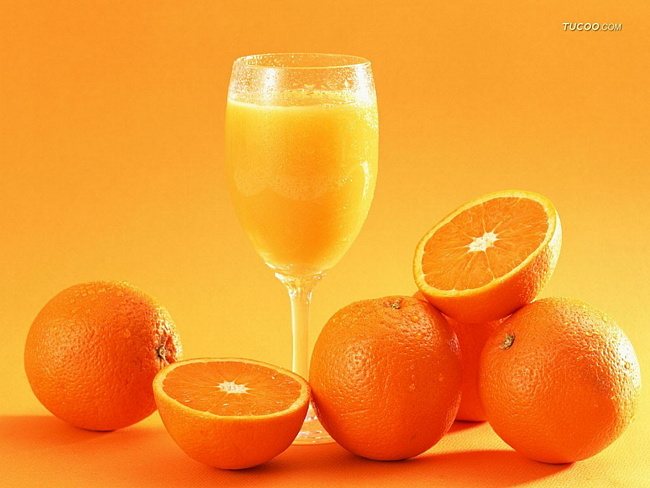
About the character of those who love orange Orange
lovers love to be the center of attention. As a rule, they succeed quite well. They are assertive, talented and independent. True, independence often turns into inconstancy, especially in love. But all the shortcomings of people who prefer the color orange are usually compensated by the fact that they know how to turn even the most ordinary day into a holiday and infect others with their cheerfulness.
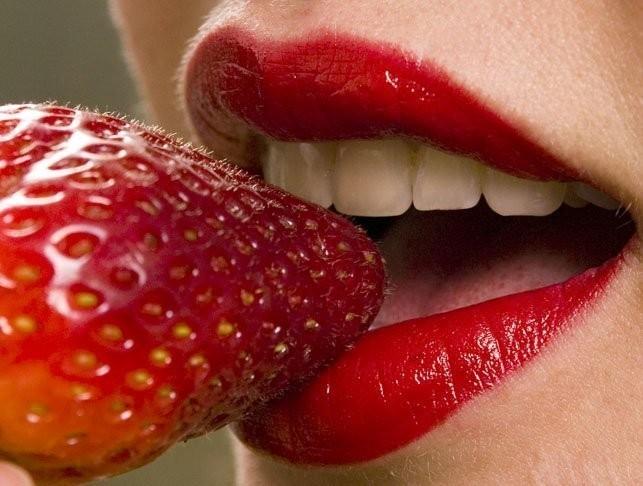
About the character of those who love the color red
In mythology, the color red is associated with the god of war, Mars. And people who choose this color are conquerors by nature. They are distinguished by courage, willpower, activity in all sorts of areas, but also by imperiousness, temper and impatience. Red lovers are sociable and confident. They know how to achieve success. As a rule, they leave no one indifferent: they are either adored or hated. But it is red lovers who make our planet not such a boring place.
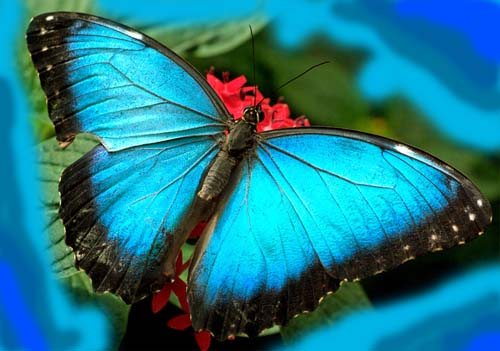
About the character of those who love blue
This is the color of the clearest sky. That is why pilots love him so much, and paratroopers also have blue berets. Blue is liked by those who can dream. And if you chose this color and your work coincides with your calling, then you can move any mountains! Those who prefer blue are open to life, its joys and adventures. The worst thing for them is loneliness. But in most cases, these are very sociable people, and loneliness does not threaten them :)

About the character of those who love the color purple
Purple is a mixture of such different colors as red and blue. And lovers of purple can be contradictory and mysterious, but they are invariably creative people who know how to bring a fresh spirit to even the most routine activities. Those who prefer purple, as a rule, are distinguished by extraordinary intelligence and a special view of the world. They are easy and pleasant to communicate with, but very difficult to truly get to know.

About the character of those who love gray
This color is rather inconspicuous.
In the same way, those who like him are not prone to ostentation, are cautious and not too trusting. Lovers of this color are non-confrontational and always strive for compromise. Sometimes this results in excessive compliance, although sometimes among those who prefer this color there are real “gray cardinals” who manage to outwit everyone. In any case, if you chose the gray color, then in life what is more important to you is not bright impressions, but inner peace, and you know how to achieve it. About the character of those who love yellow
This color is often associated with the sun, and is chosen by optimists. Yellow lovers are sociable and witty. They know how to be truly reliable friends. They are attracted to everything new and interesting. And they themselves know how to attract others to themselves. And if you chose yellow, it means that you live in harmony with the world and with yourself, even if you have many different small problems, because you know that sooner or later they will be resolved.
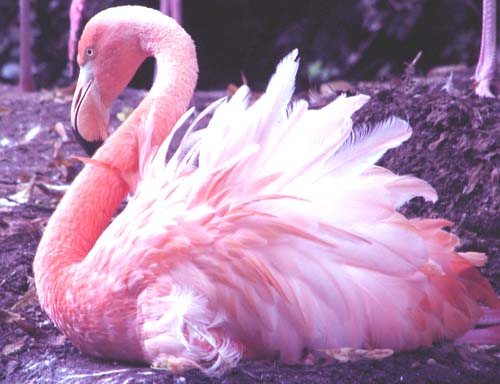
About the character of those who love pink.
This is the color of romance and dreams. People who choose it love to dream and are sophisticated, vulnerable natures. Lovers of pink are able to appreciate art and beauty like few others. Usually these are very pleasant people to talk to. But they especially need to have someone nearby who understands and can support them in difficult times.

About the character of those who love green Green
is rightfully considered the color of life. It is no coincidence that we even associate nature with it. Lovers of this color are usually confident and balanced people. They are caring, kind and generous. In most cases, those who choose green are open to everything new, but at the same time they rarely take risks, preferring proven ways to achieve their goals. These are very nice people, as is the color green itself :)
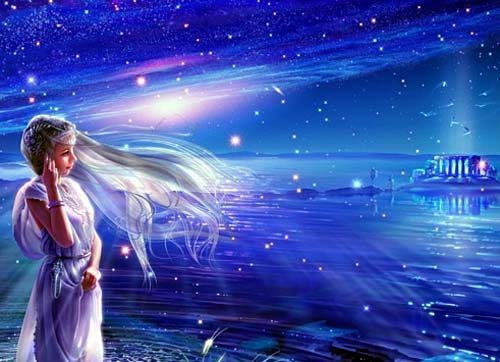
About the character of those who love blue
This is the color of the calm sea. And people who prefer it, as a rule, are distinguished by calmness and depth. They are trusting and modest. They tend to avoid large companies. But in a close circle they often become the life of the party. Blue lovers are very responsible, sometimes they can seem boring because they carefully think about every step they take. But they rarely take the wrong steps, and these are one of the most reliable friends, capable of helping not only in word, but also in deed.
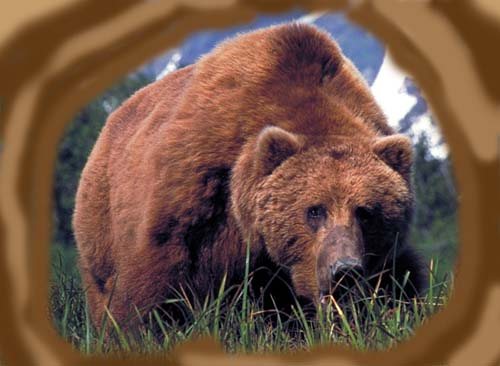
About the character of those who love brown
This is the color of tree bark and earth. People who choose brown have an even and calm character. They are often conservative and love solitude and silence. A person who loves the color brown is unlikely to become a mass entertainer. But such people can be entrusted with any business where success will depend on their ability to control themselves and others. Those who prefer brown are true friends. The main thing is not to be offended on their behalf because they will always tell you to your face exactly what they think.
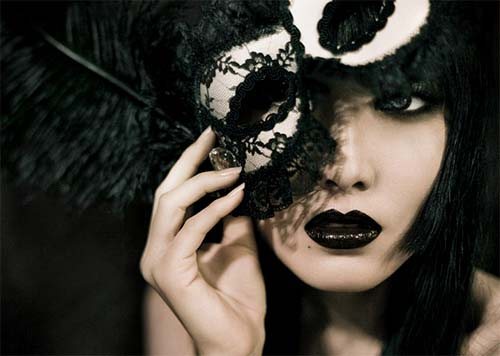
About the character of those who love black
This color is as ambiguous as white. It is often associated with something dark. But it is precisely this color that is also associated with black limousines, black caviar, black pearls :) People who choose black are, as a rule, quite decisive. And there are much fewer pessimists among them than is commonly believed. They just know the value of life and sometimes look down on it. Sometimes black lovers are selfish, but at the same time they know how to appreciate true friends.
Original link: https://tanjand.livejournal.com/421953.html
Thoughts and positions published on the site are the property of the authors, and may not coincide with the point of view of the editors of BlogNews.am.
Grey
- Extremely muting.
- It is the virtual absence of color and therefore causes depression. When the world turns grey, we instinctively prepare for winter sleep.
- In the wrong tone, it also extinguishes other colors.
- Heavy use of gray usually indicates self-doubt and fear of being found out.
- Graphite in business is strength and professionalism.
- It can highlight age and fatigue.
- Means: neutrality, professionalism, authority and power, self-doubt, depression, depression, hibernation, lack of energy.
